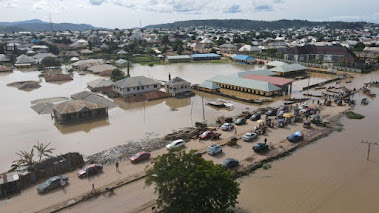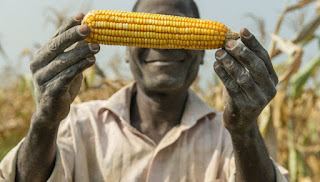Case study: Baringo County, Kenya
A nation of lakes
Out of the 667 lakes in Africa, 64 of them are in Kenya. Part of this extensive lake system runs through The Great Rift Valley, which runs from Lebanon down to Mozambique and cuts a backbone through central Kenya. It protrudes at the joining of divergent tectonic plates, producing the lakes and volcanoes along it's ridge-line. The main inflow to the Valley within Kenya is from Lake Turkana in the north, which itself receives inflows from the Omo River in Ethiopia.
Despite it's considerable lakes, Kenya's overall land area is 80% classified as arid and semi-arid land. When thinking about environmental change in relation to Africa, the negative connotations of dry lakes and wells spring to mind. In 2010, the Rift Valley lakes were at their lowest levels since 2002. As a consequence, studies found that it was expected that a warming climate would result in the lakes throughout the valley drying up but the intensification of the hydrological cycle over the last decade has actually caused the lake levels to rise.
A town concerned
Prompted by local populations in the small town of Marigat, a Kenyan geologist named Simon Onywere checked recent satellite imagery of Lake Baringo. The people in the town claimed the local school was close to flooding. He noticed that the shoreline of the lake was changing year by year. By the time him and his peers at various universities had furthered their investigations, towns and populations living on the banks of the Baringo had flooded and resulted in the displacement of the people living there.
Marigat is main income is lake-fed irrigation agriculture and the soil quality across Baringo has been considered low. Rising lake levels have caused further water erosion of the soils, reducing nutrient levels and causing siltation of the soil. Away from Marigat, Baringo County's economy is reliant on raising livestock. Flooding not only reduces space for this livestock but reduces food sources for the grazing animals.





Great blog! I like that you decided to focus on a case study and link what is happening to Kenya's lakes due to climate change with the effects they are having on the people.
ReplyDeleteWhen you say:
"When thinking about environmental change in relation to Africa, the negative connotations of dry lakes and wells spring to mind"
Why in relation to Africa? Is the drying up of lakes more common in Africa than other parts of the world? Maybe give 2 or 3 examples of lakes and wells drying up in Africa to back up why you get these negative connotations
Hi Francy
DeleteThanks for taking the time to comment on my blog.
I was using these connotations in reference to the fact that they aren't really correct. There are sweeping generalisations engrained within Western society's picture of "Africa". In the UK, you only have to turn on the radio right now to get access to this picture. As part of our culturally insane method of listening to the same 15 songs every December, we are playing the Christmas song called "Do They Know It's Christmas?" by Band-Aid. Part of this song has lyrics that say:
"Where the only water flowing
Is the bitter sting of tears"
... and ...
"Where nothing ever grows
No rain nor rivers flow"
Africa is a large place with a huge array of different ecosystems and climate biomes, and consequentially the effects of climate change on these areas in vast. I'm not suggesting that there aren't lakes or wells running dry from drought (I even wrote a blog about the impacts of drought on Kenyan communities!) but I am trying to suggest that the overall "stereotypical" image is perhaps incorrect. Whilst I think using examples of lake levels decreasing would show that lake levels rising is potentially an outlier, I think it would also help to reinforce those overtones I am trying to avoid.
Cheers
Tim